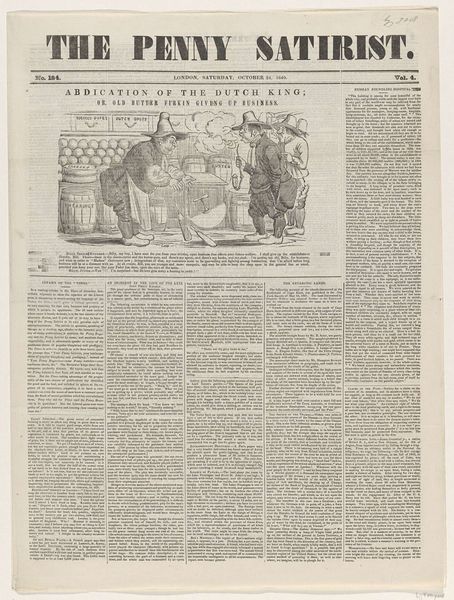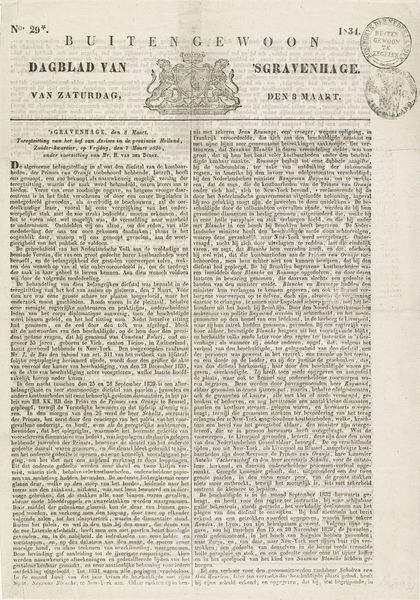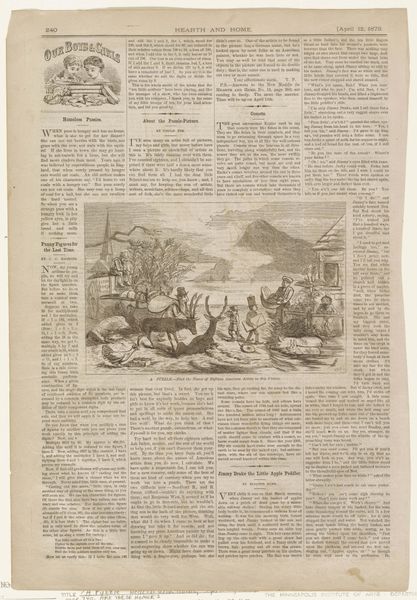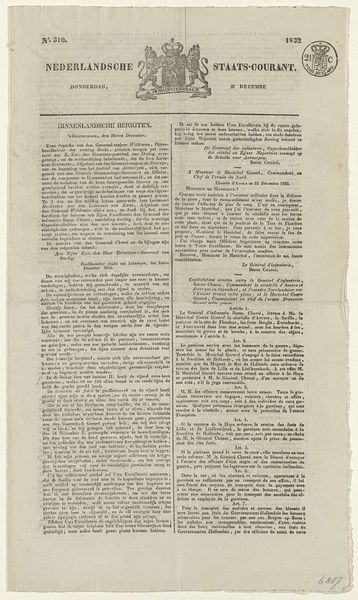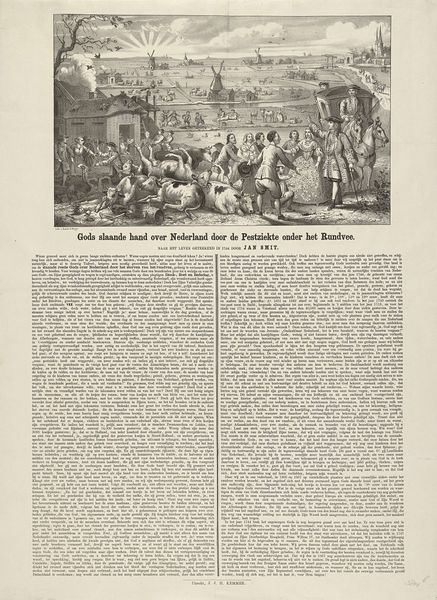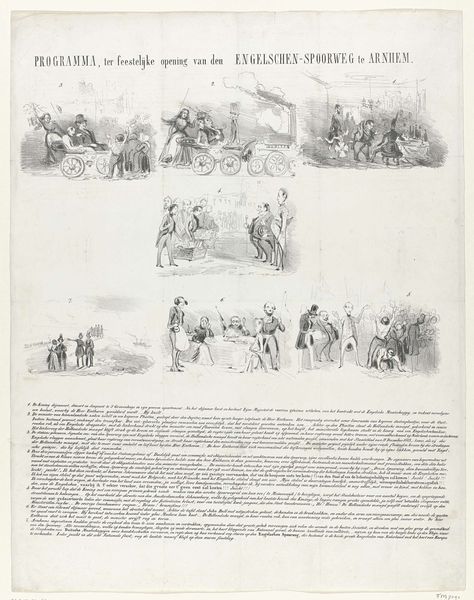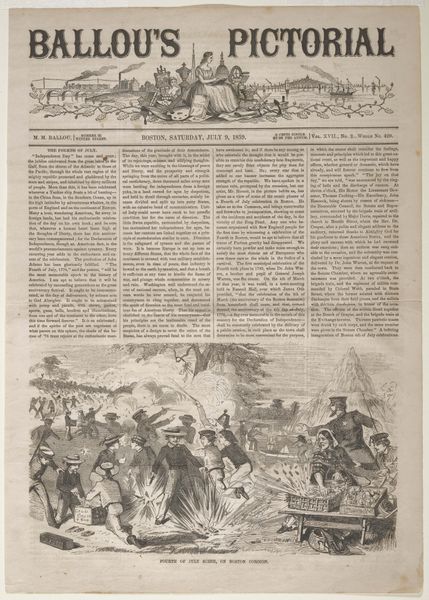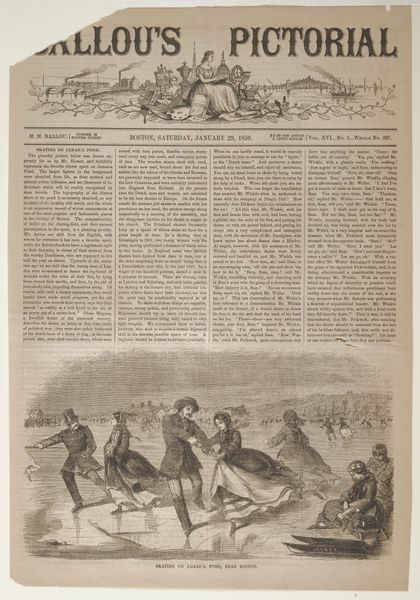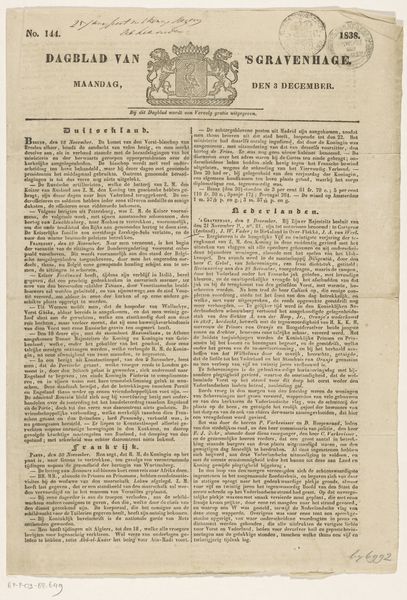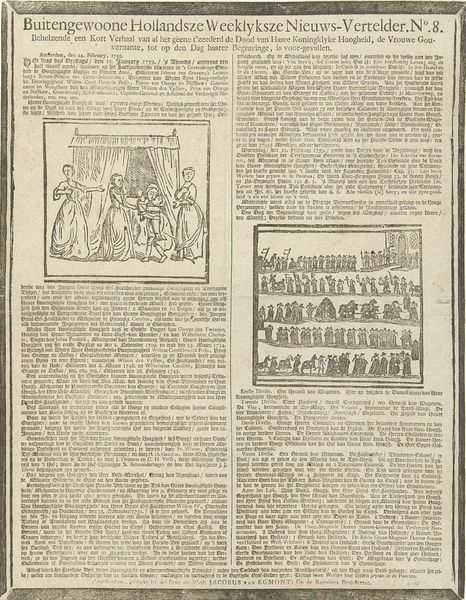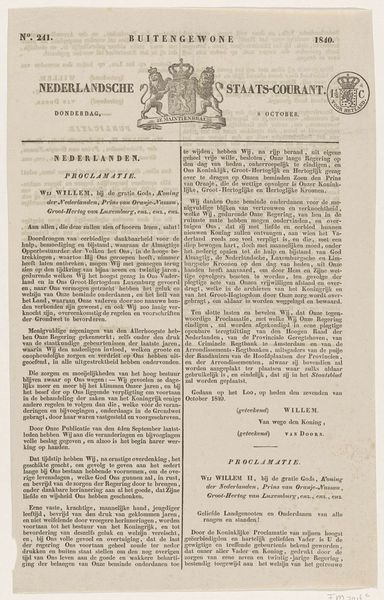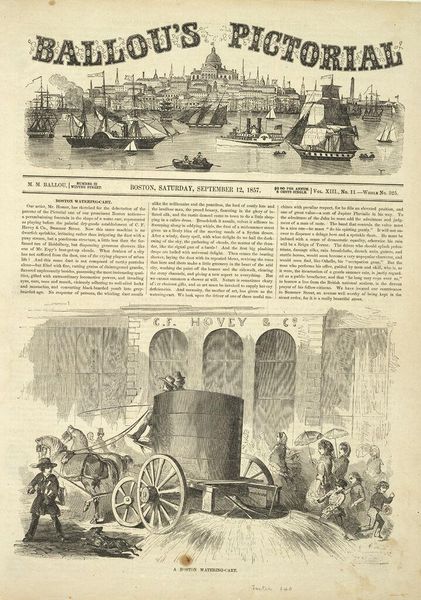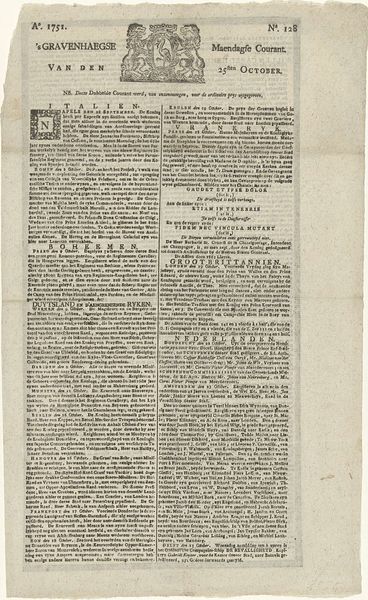
Dimensions: height 132 mm, width 218 mm, height 427 mm, width 273 mm
Copyright: Rijks Museum: Open Domain
Curator: This print captures the wedding of Willem V and Wilhelmina of Prussia in 1767. It’s currently held at the Rijksmuseum. An anonymous hand rendered the original engraving on textile. What's your initial reaction to this piece? Editor: Regal, yet somehow constrained. The composition feels rigid, almost performative. There is something quite static about the group arrangement in the relatively shallow pictorial space. The textile adds an interesting tactile quality that contradicts the formal stiffness. Curator: Let’s delve deeper into the symbols then. Observe how the bride's veil dominates the right side, almost eclipsing the royal figures. It represents not only purity, but also perhaps the weight of expectation placed on Wilhelmina. Then note how the groom stands facing forward in contrast to his bride. The entire engraving feels orchestrated with potent significance. Editor: I agree, the veil becomes an almost oppressive element—it carries significant weight both visually and symbolically. However, structurally, it provides a crucial counterweight to the gathering on the left, maintaining visual balance within the engraving. And what does it signify if we ignore its narrative symbolism, focusing instead on how it guides the viewers' gaze. Curator: Excellent point. From an iconographic viewpoint, consider the chandeliers above. They signify wealth, divine light, and perhaps the enlightenment ideals influencing the era. They're positioned quite high, creating a hierarchical visual structure. Is there more for our guests to observe? Editor: Yes, consider the engraver's lines. The crisp delineation creates contrast with the flat and monotone color palette of the textile medium. Also, the density of detail varies greatly across the surface of the print; note how much more attention is lavished on clothing folds in the royal group to the right, as compared with that devoted to secondary members of the wedding party, especially on the left. This intentional disjunction invites layered structural inquiry. Curator: By focusing on this historical portrayal of royal alliance, we’ve illuminated how symbols work in concert with the overall structural and material choices, even within what might seem a straightforward depiction of a historical event. Editor: Absolutely. What began as a formal arrangement unravels into a rich study of cultural symbolism and the strategic execution of Baroque printmaking techniques. A happy occasion— and one pregnant with semiotic opportunity.
Comments
No comments
Be the first to comment and join the conversation on the ultimate creative platform.
